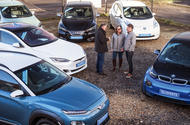Evans seeks expert advice when it comes to buying a used EV
EV anxiety remains, but the switch to electric power is gathering momentum. And, what’s more, you don’t have to pay a premium and buy new
Never mind all the new electric cars arriving this year, could 2020 be the year people start buying used ones? It’s an important question since whether people are prepared to buy used electric cars and for how much will help determine how successful the new models will or won’t be.
Simply put, it’s used EVs that will provide nervous buyers with their first, more affordable experience of an electric car that one day may give them the confidence to purchase a new one. It’s used EVs that will determine how much people pay each month for a new model on a PCP. And it’s used EVs that, if they sell easily and for a profit, will give dealers the confidence to market and support the new models.
Fortunately, it looks as though EVs may have turned a corner. Consumer interest is increasing as new models with longer ranges arrive, the charging infrastructure expands and city centres begin penalising fossil-fuel cars. Sales of new and used models are growing while, crucially, the residual values of used EVs are, for the most part, stabilising and even rising in one or two cases, albeit from a very low base.
Leading auction house Shoreham Vehicle Auctions believes the market has reached a “tipping point of acceptance”. It cites the example of a 2015-reg Nissan Leaf Acenta with 20,000 miles that in 2017 was valued at £8850. Last year, the same model with the same mileage but registered in 2017 was, it says, worth £11,000.
It’s not a universal trend, though. CAP, a valuation guide, says the EV sector is a two-speed market with cheaper used EVs such as the Peugeot iOn and Renault Zoe rising in value, while premium models such as the Jaguar I-Pace, Audi E-tron and Tesla Model X are still falling.
“There is a growing market for a used EV bought for use as a second car for city commutes and we expect to see demand increase as clean air zones are rolled out and new models are launched,” says Chris Plumb, senior valuations editor at Cap HPI. “On the other hand, the high price of new premium models is yet to translate into higher used prices.”
As more EVs come to market, so the traditional laws of supply and demand are asserting themselves. For example, high numbers of two-year-old Volkswagen e-Golfs and Nissan Leafs (especially 30kWh models) are depressing prices. However, Plumb says that’s okay.
“A sign that the EV market is maturing is that used EVs are performing under the same market pressures as their petrol and diesel counterparts,” he says.
So, if EVs really have turned a corner, perhaps now is the time to consider buying a used one.
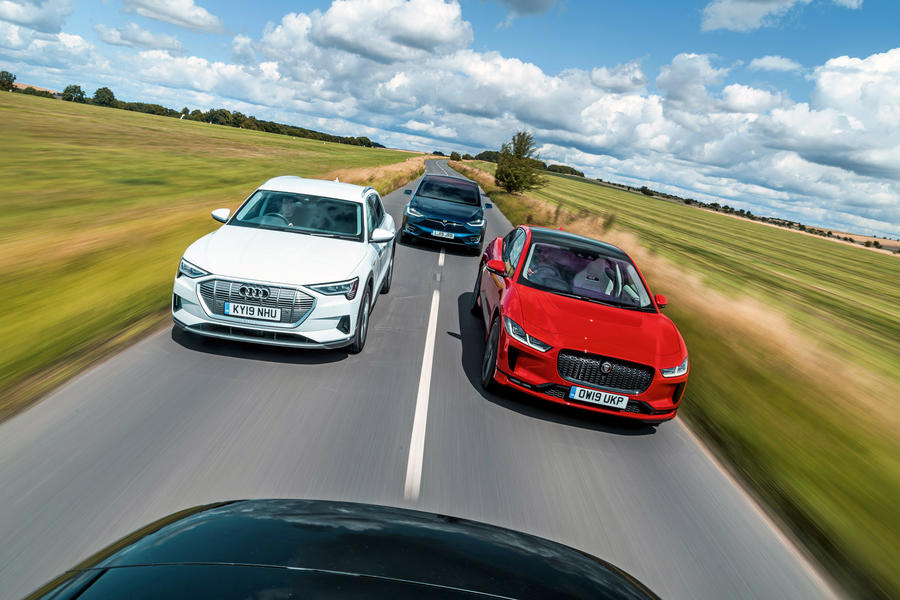
How to buy a used EV
With no oil to dip, no coolant to check, no other examples to compare it with and most likely a salesman who is as clueless as you are, a used EV can be a terrifying prospect for the uninformed car buyer. So start with the basics.
Generally speaking, firstgeneration EVs have shorter ranges than the latest models. You can gauge a model’s range from its kWh rating, such as the Renault Zoe’s 22kWh. It’s a measure of the battery’s energy storage capacity expressed in kilowatt hours. The larger the number, the greater the car’s range but the longer the battery will take to fully recharge.
With some early EVs you have to lease the battery, unless the finance has been settled and it’s now included in the car’s selling price. Advertisements aren’t always clear about whether the price of a used EV includes the battery or whether it must be leased, so be sure to ask at the outset.
The difference in prices between cars with and without a battery can be marked. For example, a 2015-reg Renault Zoe 22kWh i Dynamique Zen with 21,000 miles and its own battery is £12,249 compared with £8700 for a same-age and mileage Dynamique Nav whose battery must be leased.
The typical battery loses around 2% of its charging capacity each year, although this has a lot to do with how it has been treated. For example, a battery doesn’t like too much fast charging, and being charged to the maximum or allowed to discharge below 20%. Be wary of an older EV car with a low mileage because examples of battery damage through insufficient charging are not unknown.
Most EVs have a battery indicator that shows how much charging capacity they have. Most 2011-reg Nissan Leafs have lost one indicator light, equivalent to a 5-8% loss in range. It’s harder to tell a Zoe’s battery capacity – you’ll need a dealer to interrogate the vehicle’s software. Ignore scare stories about having to splash out thousands on a replacement battery since it’s possible to buy replacement cells for a few hundred pounds that will restore charge capacity.
Only buy a used EV that has a full service history since it will have had all its software updates. The battery may still be warranted, too. Check all the on-board electronics and infotainment services work. Make sure all charging leads are present and correct as replacements are expensive.
An EV derives some of its battery charge from regenerative braking that occurs when you lift off the accelerator. It can be strong enough to make conventional braking unnecessary. Worn brakes on an EV suggest it has been driven quite hard since, under normal use, they should last longer than brakes on a conventional car.
EVs are heavy and can wear out their suspension. For example, suspension arms are a weak spot on early Renault Zoes. On the test drive, check the ride, steering and handling, and listen for thumps and rattles over speed humps.
Six of the best used EVs
The used EV market is showing signs of growth but, as this was written, one popular sales website was displaying just 2300 of them. At least they suit most pockets thanks to prices ranging from £5195 for a 2011-reg Nissan Leaf to £99,950 for a 2019-reg Tesla Model S. Here are some of the best…
![]()
Nissan Leaf (2011-18)
Price: £5000-£16,500
Official range: 100-155 miles
Our pick: Leaf Acenta 30kWh, 2015-reg, 64,000 miles, £9995: Early versions were basic and had a smaller boot but, from 2013, the car gained more range and three trim levels. There’s a 22kWh version but we prefer the 30kWh’s longer range.
Look out for: Reduction in battery charge cells, that the unique infotainment SD card is with the vehicle and that all recalls have been followed up. Brakes should last 50,000 miles.
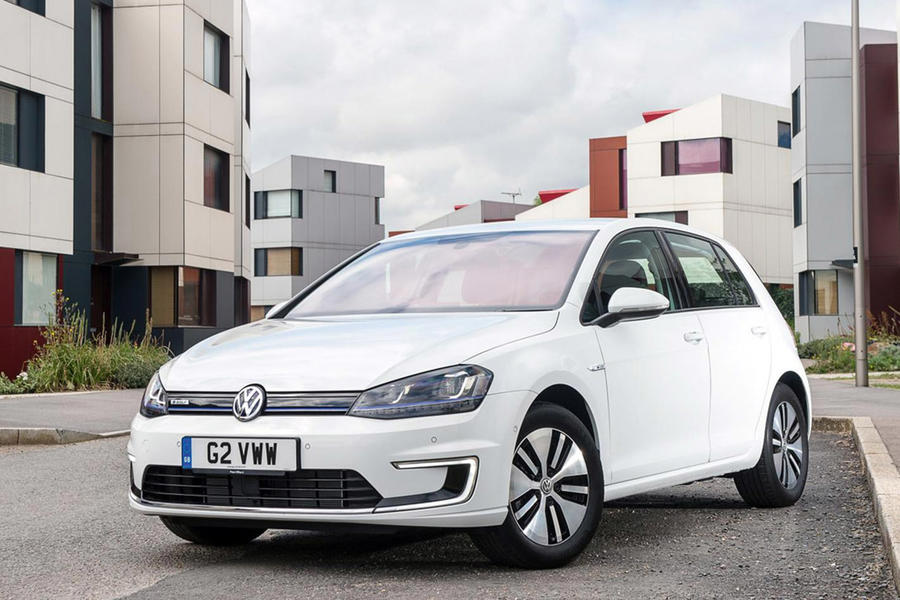
Volkswagen e-Golf (2014-19)
Price: £15,995-£31,000
Official range: 118-186 miles
Our pick: e-Golf 24.2kWh 115PS, 2016-reg, 30,000 miles, £16,000: The e-Golf not only looks like a conventional Golf but feels very much like one, too. Early versions had a short range and weren’t very powerful but in 2017 the model gained a 35.8kWh battery, while power increased from 113bhp to 134bhp.
Look out for: These cars are generally tough but check battery health indicator and service history.
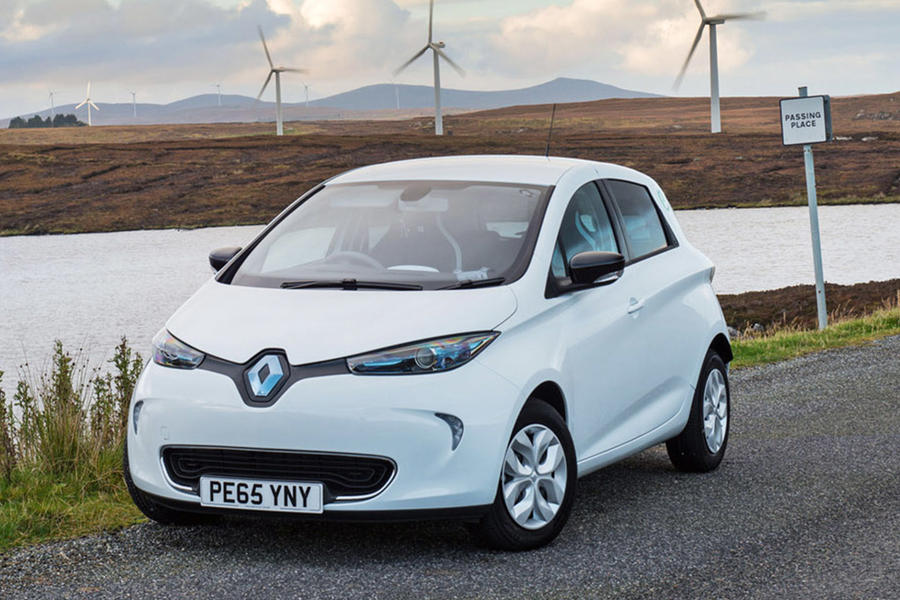
Renault Zoe (2013-18)
Price: £5600- £20,000
Official range: 130-250 miles
Our pick: Zoe R240 22kWh i Dynamique Nav, 2015-reg, 21,000 miles, £12,250: Roomy, practical, safe and with a good range, from 2015 Zoes badged ‘i’ came with a battery as standard and cost more. Leasing a battery costs from £50 a month. Charging times are slower than the Leaf.
Look out for: Check the tyre sealant supplied with the car is in date and also for irregular front tyre wear. The front suspension can fail so listen for thumps and rattles. Make sure the model’s eight recalls have been acted on.
![]()
BMW i3 (from 2013)
Price: £11,990-£38,975
Official range: 80-120 miles (battery-electric version)
Our pick: i3 94Ah, 2016-reg, 29,000 miles, £18,450: The i3 goes further than most EVs by using advanced materials and having a space-age interior with ‘suicide’ doors at the rear. As standard, all have 19in alloys, climate control, a sat-nav and, crucially, a battery.
Look out for: Check if it has the optional fast-charge system. The carbonfibre body can be a devil to repair. Make sure it has a full service history since there have been many software updates.
![]()
Jaguar I-Pace
Price: £49,999-£78,900
Official range: 310 miles
Our pick: I-Pace 90kWh SE, 2018-reg, 12,000 miles, £49,999: Despite having been on sale for less than 18 months, the I-Pace is surprisingly plentiful in the used market. This is partly because a lot of dealer demos are being de-fleeted but also because some are still priced a little too strongly. It’s your cue to haggle for a great deal on this superb EV.
Look out for: With numbers growing, the I-Pace is quite colour- and specification-sensitive, so choose with care.
![]()
Tesla Model S
Price: £30,000-£90,000
Official range: 248-381 miles
Our pick: Model S 90D, 2016-reg, 28,000 miles, £49,900: Among older used EVs, the Model S has no rivals, while the brand’s Supercharger network is the best. There are cheaper and less powerful versions but we’ve aimed high with the 90kWh version. Its battery has an official range of 346 miles, while the electric motor produces 417bhp. The ‘D’ in the name indicates it’s four-wheel drive. Look for cars with free power for life.
Look out for: Body damage – it can take ages to fix. Check the door handles glide out and brake discs have plenty of life. Make sure all the electrics work.
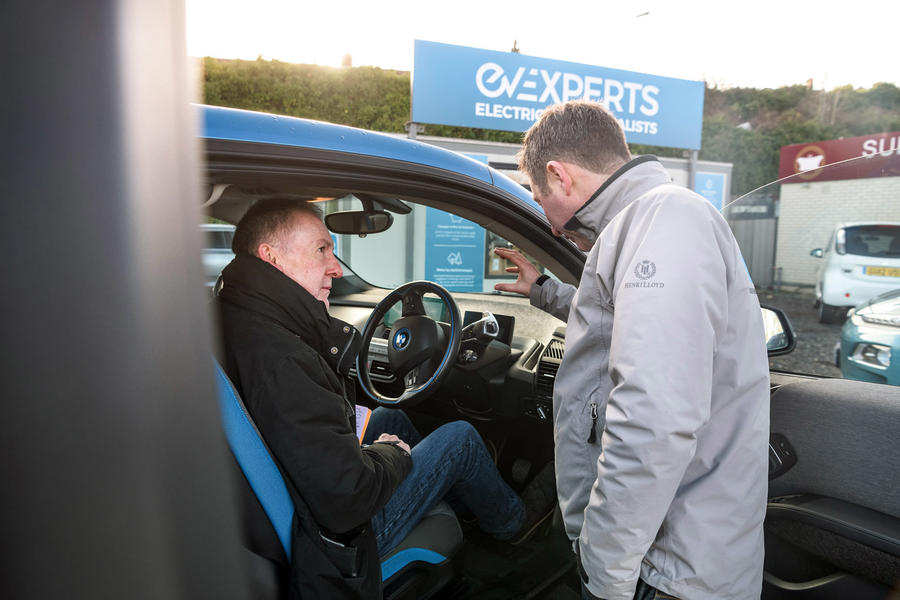
Meet the used EV dealer
A sign that used electric cars are becoming more popular is the arrival of dealers specialising in them. EV Experts, based in Guildford, was founded in 2017 by Martin Miller, a former advertising executive with Ogilvy & Mather where he worked on the Ford account, and later at Nokia where he became familiar with battery technology. A few years ago, he found himself in the market for a used BMW i3 but was shocked by how poorly dealers treated him.
“It was a woeful experience,” he tells me when we meet on his forecourt located, ironically, on the site of an old BP filling station. “If you could persuade them to let you try an i3, they weren’t interested in accompanying you and they knew very little about the technology. Later on, I visited three Renault dealers who tried to persuade me not to buy a Zoe but to buy a Clio instead!”
Miller had recently been made redundant from Nokia and had some money to invest. He thought he could do better, which is how EV Experts came about.
“I decided that selling used EVs needed a specialist approach so along with my partner Estelle Symonds, who has a legal background, we started EV Experts intending to address those problems we’d encountered when looking for our first EV.
“We take the time to find out how an EV may or may not slot into a customer’s lifestyle. We explain the technology and we help them set up home charging or to work out, if they have no driveway, where else they can charge – perhaps at the gym or the library. We guide them around the apps that can help plan their journeys, too.”
Miller sells only cars with a full service history since they’re likely to have had all their software updates. Stock comes from auctions (there are increasing numbers of EV-only sales), from other dealers wary of used EVs and as trade-ins.
“This year we’ve seen more people trading in their old EV that they bought as a second car for a newer one that is now to be their main one,” he says.
Miller offers a warranty specifically tailored to EVs. There have been claims but on things such as sensors, cameras and suspension rather than batteries, motors or inverters.
He’s looking forward to the rest of 2020. “Sales are rising while the high prices of some EVs aren’t putting people off. They’ve done PCPs and are sick of getting nothing back. Instead, they increasingly see an EV as a long-term proposition they’re happy to fund on the mortgage instead. Our only problem is disposing of their diesel trade-ins!”
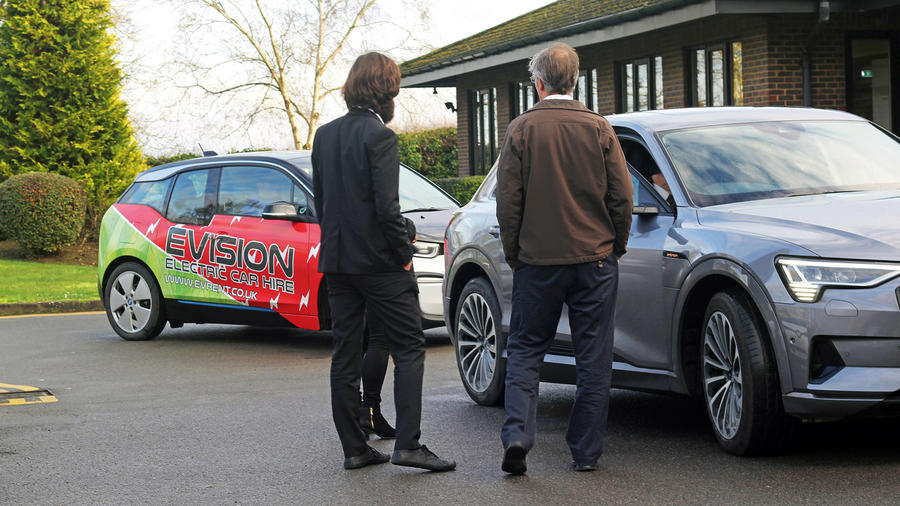
How you can try before you buy
“Our son-in-law sent us a Tesla wall charger, so we thought we better get a car to plug into it.”
As a reason to go green it’s not quite on the same level as saving the planet, but I get the impression Lorraine Bailey is just making excuses for her husband John, whose heart is already set on buying their first EV. So set, in fact, that the couple have come in John’s Jag all the way from Earley near Reading to the Holiday Inn, outside Sevenoaks, for a presentation on the benefits of running an electric car. Afterwards, there will be a chance to drive a Jaguar I-Pace, Tesla Models S, X and 3, an Audi E-tron, a BMW i3s and a Renault Zoe.
The Baileys have been joined by 50 other folk – a mix of selfemployed people keen to know more about the business case for electric cars, private buyers on the edge of purchasing their first and the simply curious.
Among them is Marcus Kuzmiak, from Reading. “I am a data evangelist working in the renewables sector,” he tells me, without a trace of a smile. “I’ve lived car-free for 12 years but with the advent of electric cars I no longer intend to. My Tesla Model 3 arrives in 30 days. The EV culture, our responsibility to the planet… it all appeals to me.”

The presentation that he and everyone else has paid £20 each to experience today is being given by EVision Electric Vehicle Hire, an EV leasing and rental business. I’m expecting its green velvet glove to pack a hard-hitting sales punch…
Hugh Edeleanu, chairman of EVision, speaks first. The Cambridge-educated engineer says that climate change is really happening but like the cavalry coming over the hill, help is arriving in the form of new-generation EVs. “This year will be the tipping point,” he says. “Models with longer ranges and better technology are coming.”
He’s quick to point out, though, that most of today’s EVs also have perfectly good ranges and are very reliable. A hand shoots up from the audience: “Most?”
Edeleanu says the company doesn’t rent Nissan Leafs. “The model’s range is not good and it doesn’t have proper battery cooling.”
Steering the presentation back to a more positive note, he explains the pros and cons of all the various charging options and sets out the benefits of running an EV: cheaper than a fossil-fuelled car to run, safer to drive and kinder to the environment. But also, as of April, no benefit-in-kind charge for employees driving a company EV and only a small charge (1%) from 2021, rising by the same amount thereafter. Currently, the charge is 16%.
I’m taken back to an earlier conversation with one of the delegates. Kevin Stripp and his wife Sadie run a business installing ground source heat pumps. They’re interested in EVs because they’re a good business fit, but also because they attract serious BIK savings. What’s holding them back is buying the wrong car and being left behind by newer models with longer journey ranges. I tune back into the presentation as Edeleanu is tackling this very point.
“EV technology is changing rapidly and the choice of models is growing by the month. The problem is, if you buy an EV, you’re stuck with it, so rent or lease instead and buy yourself some time while the market develops and you find out which EV suits you best. A lot of our customers who intend to buy an EV do this.”
Sales pitch over, Edeleanu invites questions. Topics include insurance, crash safety, electric fires and lithium ion availability. They’re a bit downbeat, though, so after a while Edeleanu calls time and invites everyone outside to drive the cars.
I follow them out. The Audi E-tron is causing a stir. A couple are pulling away in the I-Pace while others are bagging drives of the Teslas. Each car is accompanied by an EVision employee to answer questions and ensure the cars return in one piece.
I zero in on a couple of young delegates already installed in a Model 3. EVision’s man talks Lydia through the Tesla’s controls. Liam, her husband, tells me he’s an electrician with a growing business installing domestic EV chargers. Turning up in an EV rather than his BMW M240i will look good, he says. Lydia steers the 3 out of the hotel car park and intothe main road. She’s keen to see if it’s as quick as Liam’s M.
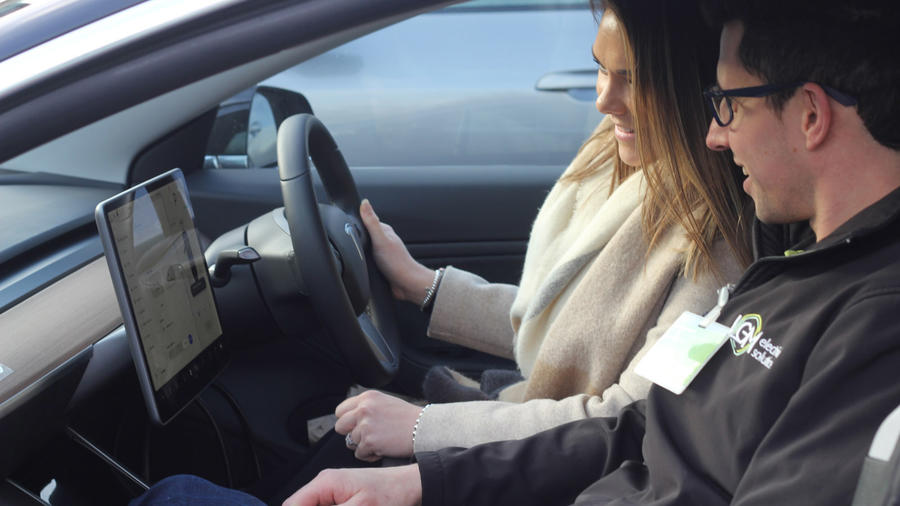
“It is!” she declares, as our heads snap back into the restraints. Both like the car’s looks and Lydia is amazed that throughout the drive she hasn’t once used the brakes. It’s Liam’s turn now. Exiting a roundabout at a bit of lick, he reckons the 3 leans less than his BMW. Back at the hotel, I spy a delegate about to leave in a Model X. Phil Jackson is a consultant in environmental and sustainable buildings. He drives a 12-year-old BMW 320d.
“With the changes to BIK, I’ll be moving into an EV from April,” he says. “It will suit my business, too. This Tesla’s too expensive for me, though. Instead, I plan to get an i3.” I assume everyone is new to EVs but as David Bradford settles behind the wheel of the I-Pace, he reveals he was the country’s first licensed EV taxi driver. “It was 2014,” he says. “I couldn’t wait to pick up my Model S and by the time I’d finished with it, it had done 200,000 miles. Perfectly reliable it was, too. On a single charge from Maidstone I could do two Heathrow returns and a single to Gatwick. I’m looking to make that a return.”
He likes the Jaguar’s higher driving position and thinks it’s quieter, too. “I love driving an EV in London. After all, when you’re not moving, you’re not using.” As a hard-sitting sales punch in a green, velvet glove, it’s not half bad.
How to test drive an EV
EVision isn’t the only company offering EV taster experiences and short-term hire. There are others, including:
DriveElectric: A member of the government’s Go Ultra Low scheme designed to encourage EV take-up and sustainability. Its Flexi-Lease service allows customers to trial a range of electric cars before making a longer-term commitment.
Electric Vehicle Experience Centre: Based in Milton Keynes, this is the UK’s first ‘brand neutral’ EV centre where visitors can test drive a wide range of models and learn more about the technology.
TryEV: Runs home and workplace test drives and demonstrations of most types of EV. Its EVangelists tell you all you need to know and can refer you to selected dealers if you decide an EV is for you.
READ MORE
New Ford Mustang Mach-E EV makes European debut in London
EV to Edinburgh, take two: 700 miles in a Kia e-Niro
Hyundai and Kia seal platform deal with new EV firm
Source: Autocar
